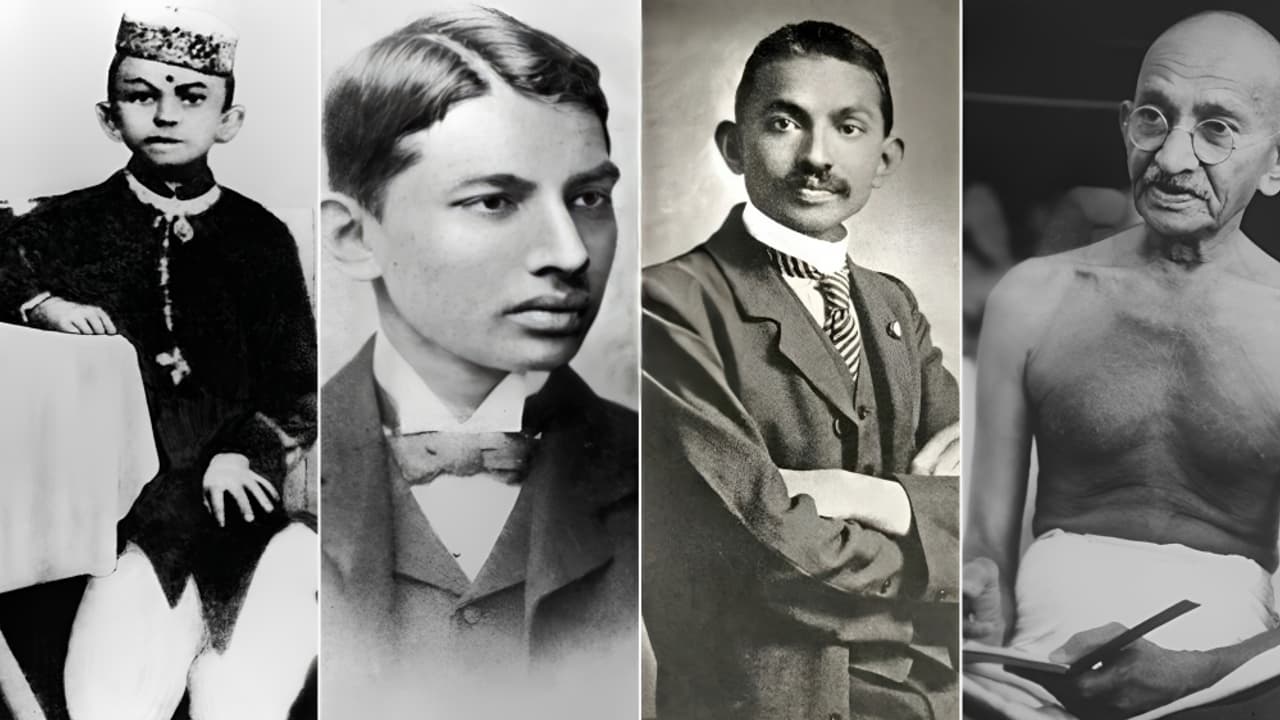As India marks Mahatma Gandhi’s 156th birth anniversary on October 2, 2025, here are lesser known facts about the Father of the Nation. From his shyness as a child to his influence on world leaders, these insights reveal a simpler side of Gandhi.
Every year on October 2, the world remembers Mahatma Gandhi, also called the Father of the Nation. His ideals of truth, non-violence and simplicity inspired India’s freedom struggle and influenced movements across the globe. While many know him for the Salt March and Quit India Movement, there are several lesser known facts about his life that bring us closer to the man behind the Mahatma.
From shy child to outspoken leader: Lesser known facts about Mahatma Gandhi
Mahatma Gandhi was not born confident and outspoken. In fact, he admitted in his autobiography that as a boy he was so shy that he would run home from school to avoid talking to people. His transformation into a fearless leader shows the power of determination and self-belief.
Walking was his favorite exercise
Gandhi loved walking and called it the ‘prince of exercises’. As a student in London, he often walked 8 to 10 miles daily to save money and stay fit. This habit gave him great stamina, which later helped him lead the 241-mile Salt March in 1930, even at the age of 60.
A bitter train experience in South Africa
In 1893, while in South Africa, Gandhi faced racism when he was asked to leave a train despite having a valid ticket. When he refused, he was thrown out by force. This incident deeply affected him and pushed him to fight against racial discrimination, shaping his path toward non-violent resistance.
His first radio broadcast was amusing
During his visit to England in 1931, Gandhi made his first radio broadcast to the United States. The very first words listeners heard from him were: “Do I have to speak into this thing?” This shows his simple and humorous side.
Gandhi once threw away his shoe to help others
Once, while boarding a train, one of Gandhi’s shoes slipped onto the tracks. Instead of keeping the other, he quickly threw it beside the first one. He believed that the person who found them would at least have a full pair to use.
Punctuality was his habit
Gandhi valued punctuality. One of his few possessions was a watch, and he was very particular about time. On the day he was assassinated, January 30, 1948, he was upset because he was ten minutes late for his daily prayer meeting.
He was Time magazine’s Man of the Year
In 1930, after the Salt March, Time magazine named Gandhi the “Man of the Year.” Decades later, in 1999, he was declared the runner-up for Person of the Century, second only to Albert Einstein.
He spoke English with an Irish accent
Since one of Gandhi’s teachers in London was Irish, he developed a slight Irish accent when speaking English.
He carried false teeth in his cloth
Gandhi had a set of false teeth that he kept wrapped in his loin cloth. He wore them only during meals, then washed them and put them back in his cloth.
Gandhi loved writing but disliked cinema
Gandhi was a regular writer and even edited newspapers like Harijan and Young India. But he disliked cinema, believing it was not the right medium to spread his ideals. However, in his later years, he actively used radio.
He never visited the United States
Although admired by many Americans, including Henry Ford, Gandhi never visited the United States. Ford once received a spinning wheel (charkha) as a gift from Gandhi, which he treasured greatly.
He was nominated for Nobel Peace Prize 5 times
Gandhi was nominated for the Nobel Peace Prize five times—in 1937, 1938, 1939, 1947, and 1948. Sadly, he was assassinated before the award could be given, and that year no prize was awarded.
He inspired many Nobel laureates
Although Gandhi never won the Nobel Peace Prize, his philosophy inspired winners like Martin Luther King Jr., Nelson Mandela, the Dalai Lama, Aung San Suu Kyi, and Adolfo Pérez Esquivel.
He disliked his own handwriting
Despite his brilliance, Gandhi often said that he was unhappy with his poor handwriting. He believed it was one of his biggest weaknesses.
He changed his attire after visiting Madurai
Before 1921, Gandhi wore Western-style clothes. But during a visit to Madurai, Tamil Nadu, he saw the poverty of the people and decided to wear only a simple dhoti, making it his lifelong attire.
His birthday is also International Day of Non-Violence
The United Nations declared October 2 as the International Day of Non-Violence, honoring Gandhi’s principle of ahimsa.
His funeral carriage was used for Mother Teresa
The same gun carriage that carried Gandhi’s body during his funeral in 1948 was also used in 1997 for the funeral of Mother Teresa.
Mahatma Gandhi’s life was full of simplicity, discipline and compassion. These lesser known facts remind us that beyond being a political leader, he was a human being with unique habits, struggles, and humor. As we celebrate his 156th birth anniversary on October 2, 2025, remembering these stories helps us connect with the real Gandhi—the man who lived by his values and inspired the world.
